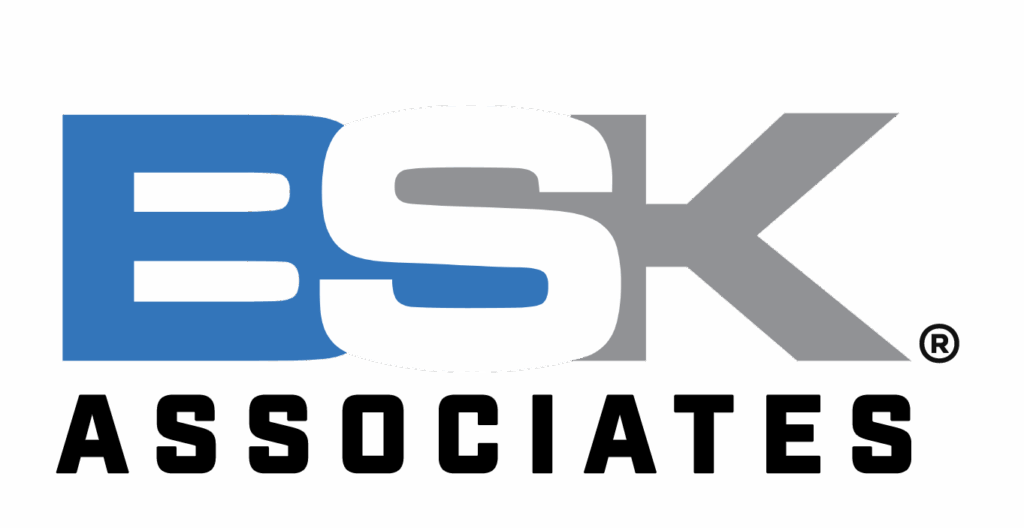For many geoprofessionals, networking events can feel like the furthest thing from anything we have been educated or trained for. Instead of focusing on technical concepts within our disciplines, we need to socialize, engage in some level of small talk, and work to establish valuable professional connections. And just like our technical work, sometimes you find success immediately, and sometimes the task is harder than we would like.
However, the key to networking in the geoprofessional world is that it’s not about collecting business cards like soil samples (though some people seem to think it is). It’s about building genuine relationships with people who understand why you get excited about what you do and why doing it well brings you joy.
The Conference Conundrum
If you haven’t been there yet, you will be or should plan to be. Standing there in a hotel ballroom with a lukewarm coffee, surrounded by people wearing name tags and that slightly desperate look of someone trying to figure out how to start a conversation with a stranger. The key is remembering that everyone else is in the exact same situation; they just may be better at hiding their networking dread.
The secret weapon? Ask about their work, not their business. “What’s the most interesting project you’ve worked on lately?” beats “What does your company do?” every single time. People love talking about cool projects, unusual site conditions, or (just like you) whatever gets their blood pumping while they’re working. These stories are what make our industry fascinating, and they’re infinitely more memorable than another elevator pitch about the comprehensive services your firm can provide.
The Art of the Follow-Up That Doesn’t Feel Stalky
So, you’ve had a great conversation about contaminated groundwater plumes or the challenges of drilling a tough site. You’ve exchanged business cards. Now what? This is where most networking attempts often fail, despite good intentions and business cards left forgotten in laptop bags.
The best window for follow-up is 48-72 hours after the event, while the conversation is still fresh in both your minds. Send a brief LinkedIn connection request or email that references something specific from your conversation. “Great meeting you at the conference, I’d love to hear how that remediation project turns out” is a personal and memorable way to follow up. “Nice meeting you, let’s stay in touch” is what everyone sends and gets immediately forgotten.
Beyond the Business Card Shuffle
Real networking happens in the time between formal presentations. The best conversations often occur in the hallway between sessions, during the coffee break, or at the hotel bar after the reception winds down (my favorite). These informal moments are where people let their guard down and share their real stories. Stories about the projects that went sideways, the regulatory challenges that were skipped during the presentations, and the lessons they’ve learned the hard way.
Don’t just attend the main sessions and disappear. Stick around for the round table discussions, join the dinner groups, and participate in the field trips if they’re offered. Some of the most valuable connections happen when you’re able to connect with a peer or prospective client outside of the normal conference agenda.
The LinkedIn Strategy That Actually Works
LinkedIn is like the digital equivalent of a professional conference that never ends. It can be incredibly valuable or completely overwhelming, depending on how you approach it. The key is being genuinely helpful rather than constantly promotional.
Share interesting articles about industry trends, repost an interesting post from someone else, and comment thoughtfully on it if you choose to. You can share your own project experiences (within confidentiality limits) and step outside our typical geoprofessional comfort zone to celebrate some of the great things we do from time to time. When someone in your network posts about a challenge they’re facing, you might offer helpful insights if you have them, maybe through a direct message. This positions you as a knowledgeable resource rather than just another person trying to sell something.
And please, for the love of all that’s geoprofessional, personalize your connection requests. “I’d like to add you to my professional network” tells me nothing about why you want to connect or how we might help each other. You can be much more personal than that.
The Long Game of Professional Relationships
The best business relationships develop slowly, like groundwater contamination, but in a good way. That geologist you met at last year’s conference might not have any immediate project opportunities, but they could be the perfect collaborator for a proposal six months from now, or they might refer a client to you next year when they’re too busy to take on new work.
Keep track of your connections beyond just adding them on LinkedIn. Make notes about their specialties, their company’s focus areas, interesting projects they mentioned, or personal details they shared (kids, hobbies, professional goals). This information becomes invaluable when you’re looking for the right person for a specific project or when you want to make a meaningful referral.
The Referral Economy
As most of us realize, there’s a big part of geoprofessional consulting that isn’t taught in schools. The missing class we should have taken would have taught everyone that a significant portion of consulting work comes through referrals and professional relationships. That geotechnical consultant who specializes in the education market might need a geologist for geologic hazard report. The environmental firm that’s too busy to take on a new project might refer it to someone they trust.
The key to becoming someone who receives referrals is becoming someone who makes them. When you hear about opportunities that aren’t a good fit for your firm, refer them to appropriate colleagues. When clients ask for recommendations for services you don’t provide, have a list of trusted professionals to refer them to. This kind of helpfulness gets remembered and reciprocated.
Conference Survival Guide for Introverts
Not everyone is naturally comfortable working a room full of strangers (shocking, right?). If the thought of networking events makes you want to hide at the back of the room, you’re not alone.
Start small. Set a goal of having one meaningful conversation per event rather than trying to meet everyone in the room. Attend smaller, more focused events where you’re more likely to meet people with a similar focus or interests. Volunteering for conference committees or helping with registration gives you an easy conversation starter and a reason to interact with attendees.
Remember that quality always beats quantity. One genuine connection is worth more than a stack of business cards from people you’ll never remember, or that won’t remember you!
The Digital Age Networking Balance
Professional organizations have increasingly transitioned their networking online, especially since the pandemic. Virtual events, online forums, and social media groups provide new opportunities to connect with professionals worldwide. But digital networking requires a slightly different approach than in-person events.
Digital networking requires you to be more intentional about your participation in online discussions. Most of the time, you need to unmute yourself and be ready to speak at the appropriate moment. Ask thoughtful questions, share relevant experiences, help others, or provide feedback when you can. Online networking makes participation in a wide range of meetings or events a more achievable reality than it might be if they were held exclusively in person. They also actually work well for many professionals, as you are often offered the opportunity to think about your responses and participate when it fits your schedule.
Building Your Personal Board of Directors
Think of networking not just as finding clients or job opportunities, but as building what business experts call a “personal board of directors.” This is really a group of trusted peers or colleagues who can provide advice, different perspectives, and career guidance. This could include:
- Senior professionals who can offer insight and mentorship
- Peers who are facing similar challenges and can share strategies
- Junior professionals who bring fresh perspectives and energy
- Professionals in adjacent fields who can offer different viewpoints
These relationships are often the most valuable for long-term career development, even if they don’t directly lead to immediate business opportunities. Sometimes you can even find all of them in one networking organization!
The Authenticity Factor
The most important networking advice is also the simplest: always be genuine. People can sense when you’re only talking to them because you want something from them. Instead, approach networking with curiosity about other people’s work and a genuine desire to learn about them, as well as a willingness to be helpful when possible.
Share your own challenges and successes honestly. Ask for advice when you need it and offer help or feedback when you can provide it. The goal isn’t to present yourself as the perfect professional who has everything figured out! This is a big mistake many people make, or think they need to live up to early in their careers. Your goal should be to develop authentic relationships with people who understand your value if they are a client, and the unique challenges and rewards of geoprofessional work if they are a peer.
Making It Sustainable
Networking isn’t a race to a finish; it’s a long game that requires consistency. A steady, modest effort over time will produce better results than intense bursts followed by months of neglect. Set aside a little time each week to maintain your professional relationships. It could be as simple as congratulating someone on a new job, sharing an interesting article, or just checking in to see how things are going.
The most successful professionals in our industry aren’t necessarily the most technically brilliant (though technical competence is always important). They’re often the ones who have built strong networks of colleagues who trust them, refer work to them, and want to collaborate with them on projects.
Remember, every expert was once a beginner, every successful firm started with zero clients, and every industry leader had to introduce themselves to strangers at their first conference. The geoprofessional community is generally welcoming and supportive. You just have to be willing to engage with it.
Now get out there and start building those relationships. Your future self (and your business development goals) will thank you.



